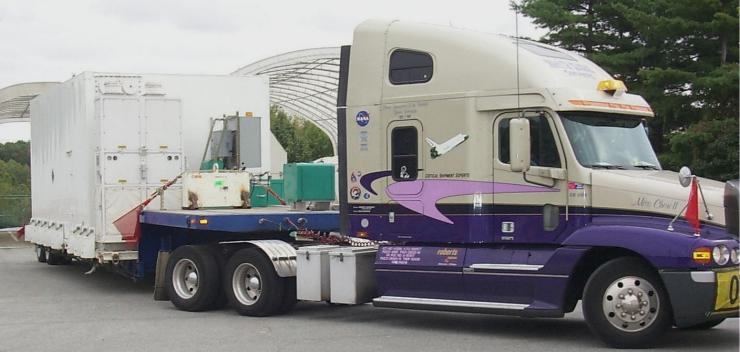Information contained in this publication is intended for informational purposes only and does not constitute legal advice or opinion, nor is it a substitute for the professional judgment of an attorney.
 Last week, the U.S. Court of Appeals for the D.C. Circuit issued a long-awaited ruling in American Trucking Associations, Inc. v. Federal Motor Carrier Safety Administration. This decision addresses various challenges to the Federal Motor Carrier Safety Administration’s (FMCSA) 2011 Hours of Service rule, which governs the hours worked by operators of commercial motor vehicles (CMVs). With this decision, which left the majority of the rule intact, the court appears to have brought an end to a decade-long legal battle between the FMCSA and the trucking industry and other public interest organizations, who challenged the rules hours limitations for CMV operators as either too severe or too lax.
Last week, the U.S. Court of Appeals for the D.C. Circuit issued a long-awaited ruling in American Trucking Associations, Inc. v. Federal Motor Carrier Safety Administration. This decision addresses various challenges to the Federal Motor Carrier Safety Administration’s (FMCSA) 2011 Hours of Service rule, which governs the hours worked by operators of commercial motor vehicles (CMVs). With this decision, which left the majority of the rule intact, the court appears to have brought an end to a decade-long legal battle between the FMCSA and the trucking industry and other public interest organizations, who challenged the rules hours limitations for CMV operators as either too severe or too lax.
The FMCSA’s first Hours of Service rule, which the Bush Administration implemented in 2003, significantly changed the landscape of the regulations that had governed trucking operations since 1962. The 2003 rule increased the daily driving limit for CMV operators carrying property from 10 to 11 hours, reduced the daily limit for on-duty time from 15 to 14 hours, increased the daily off-duty requirement from eight to 10 hours, and created the 34-hour “restart” requirement, which allowed a driver to restart a seven or eight consecutive day period of driving only after spending 34 or more consecutive hours off duty.
However, in 2004, the D.C. Circuit struck down the 2003 rule, finding that it was “arbitrary and capricious.” In response, in 2005, the FMCSA implemented a new version of the Hours of Service rule that was nearly identical to its 2003 predecessor. The 2005 rule was again struck down upon challenge. Accordingly, in 2008, the FMCSA reissued the 2005 rule with supplemental explanations and analysis. However, as a result of continuing disagreement about the rule, the FMCSA decided to promulgate a new version of the Hours of Service rule in 2011.
The Hours of Service 2011 rule resembles earlier iterations of the rule in most respects, but also included new provisions that were challenged in the instant case. These included restrictions aimed at preventing abuse of the 34-hour “restart” rule by allowing CMV operators carrying property to invoke the provision only once every 168 hours (or seven days), and by requiring that the 34-hour off-duty period between restarts include two blocks of time from 1:00 a.m. to 5:00 a.m., to ensure that drivers have an opportunity to get two nights of rest. Additionally, the 2011 rule instituted a 30-minute off-duty break that barred CMV operators carrying property from driving more than eight consecutive hours without first taking such a break.
The American Trucking Association argued that the 2011 rule’s additional restrictions to the 34-hour “restart” limitation were arbitrary and capricious. The court, however, disagreed and held that the FMCSA acted “reasonably, if incrementally, in tailoring the restart to promote driver health and safety.” The court also rebuffed the public interest organizations’ and individual truck drivers’ claim that the 34-hour “restart” remained unsafe (as it allowed drivers to work too many hours) by concluding that they lacked standing to challenge this provision. The court similarly rejected their argument against FMCSA’s adoption of a maximum 11-hour daily driving period (which replaced the prior 10-hour daily driving period), stating that the “FMCSA can be criticized for using improvidently absolute and unqualified language [to explain its decision to adopt the 11-hour daily driving allowance seemingly based on economic consequences], but we cannot say its approach is irreconcilable with congressional intent.” The court, however, vacated the requirement for a 30-minute break before a driver can operate their vehicle more than eight hours, holding that the FMCSA applied the provision to short-haul drivers “arbitrarily and irrationally” without clearly defining why a short-haul driver should be mandated to operate on the same break schedule as a long-haul trucker.
In sum, the court concluded that “what remains of the 2003 Final Rule after two remands and three rulemakings are highly technical points best left to the agency . . . [w]e therefore generally affirm the rule[.]”



